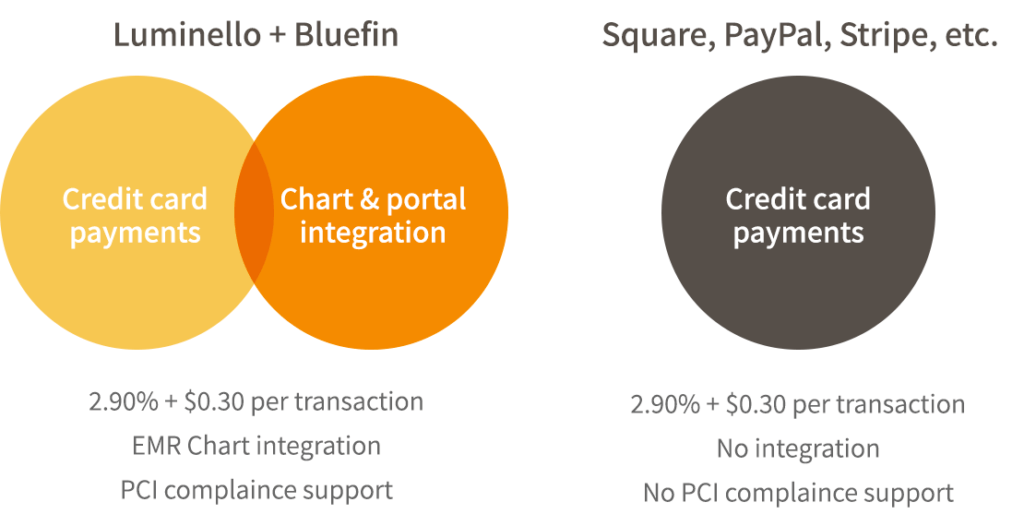Hi and welcome to the next installment in our private practice mini-series – today we’re going to focus on income in private practice, a subject not often spoken about, but which is so important in ensuring that you can provide high quality care.
This is video 2 of 6 in our series Starting a Psychiatry or Therapy Private Practice:
- Episode 1: The Mechanics of Getting Started
- Episode 2: Income in Private Practice
- Episode 3: Marketing your Private Practice
- Episode 4: Start-up Decisions You Must Make
- Episode 5: Technology in Private Practice
- Episode 6: The Highly Efficient Private Practice
Disclosures
I’m Ken Braslow, and I’m a board-certified child/adolescent and adult psychiatrist. I trained at UCSF, run my own private practice in San Francisco, CA, and founded Luminello, the electronic medical record for psychiatrists and therapists.
There are no other commercial conflicts of interest.
Goals
So the goals of today’s presentation are to help you think through how you value your professional time, and then for you to develop an action plan of how you can set up a thriving private practice.
Overview
We’re going to cover the various factors that affect salary – like how much to charge, how many hours to work, when and where to work, and a review of likely expenses.
Income
Luminello EMR
Try our free plan for as long as you’d like.
Learn more
Okay let’s start with the basics: your annual income is the product of your hourly rate multiplied by how many hours per week you work multiplied by how many weeks per year you work. Another way to put that is, what is the market rate multiplied by how many yours do you have to or want to work per week, multiplied by how much time do want to work or take off over the year.
Note that the more you charge the more patients might expect of you, including a nicer office, more availability in your schedule, faster responsiveness, and so on.
Starting out in private practice part-time can minimize the pressure you might feel at first to ramp up, but, be prepared to have start-up expenses and tasks that aren’t any different from starting out full-time.
Finally, you’ll want to figure out if you’re going to offer a sliding scale system or offer pro bono work, and what percentage of your practice you will alot to this.
Hours
Let’s dive a little bit deeper into figuring out, of the hours you will be working, how do you pick which ones of the day to offer?
In general, patients will want prime-time slots, which are typically early morning, lunch or evening hours. For kids and families, it will be after school. You’ll feel a pull to be available during all those hours to maximize your income and fill your practice, but if you don’t leave any time for yourself, you’ll burn out.
Furthermore, what if you have kids yourself and want to be there for them after school? What if you like to workout in the morning or go on dates in the evening, how will you handle those times?
Some clinicians pick just a couple days of the week for more prime-time hours. Others just offer regular business hours daily. Some even break up their schedule into two chunks like being available in the morning, and then again in the evening, and then doing administrative or other professional functions, during the less busy times of the day
What about administrative time? Will you schedule that in during the day? If not, when will you do it? It either has to come out of patient care time, or non patient care time. Which is the lesser evil?
Let’s also not forget about the price of success. When you practice is indeed full, that typically means you’re in the office all day. While that can be financially rewarding, it can feel draining. So you’ll have to think about the value of every minute you could spend working versus the value of taking time for your own peace of mind.
On the clock
Let’s talk a little bit about what you will do to fill your practice. In the beginning, you need to be less choosy about which cases you take on, but still need to figure out where you will draw the line. Will you be willing to see substance abusers? How about crisis cases? Who should you say no to?
What if friends or neighbors want to see you? What about colleagues with lots of referrals, but some of which are very tough or high-risk cases. Would you feel comfortable saying no to some of them?
On a different note, would you be willing to contract with insurance companies? Often times once a clinician’s name appears on the insurance company’s listings, the phone starts ringing off the hook. If you’re okay with the reduction in your hourly rate, this can be a very efficient way to fill your practice. On the flip side, you may spend time having to do treatment reviews or provide paperwork that will cut into patient care, or personal, time. This is a very tough issue to think through fully before you’ve actually tried it, so you may wish to consider contracting to start out, with just one or two companies, and then see how it goes for you over time.
Off-the-clock
Now let’s think about some of the considerations of when you’re not working.
One of the nice things about private practice is that you get to pick which days you work or don’t work. So for example just because others are taking a three-day weekend for a holiday, who says that you shouldn’t work on a holiday if you’d prefer? And then you could take time off when other people don’t typically take time off. On the flip side, it’s often the case that your patients will take off for major holidays or 3-day weekends, so it would be painful to be in the office, but not have any patients show up that day. So you’ll need to test out and see for yourself.
Whenever you do take off, you’re going to have to think about coverage for your practice. Do you actually get a colleague to cover, or can you cover for yourself? Of course if you cover for yourself, does that really count as getting away fully? On the flip side, if you don’t want to cover, or you’ll be off the grid, what systems will you use for cross-coverage? And who can you trust?
And will you feel that you need to make up the income that you didn’t bring in when you were off? Will you think of it has lost income, or think of it as time gained?
Location
Moving onto location. How do you pick where to practice?
Some of the things you will need to think through are, do you want to work downtown in a city, which can often have a larger population base from which to draw patients, versus in the suburbs, where you may be more likely to see kids and families, or where you may be closer to where you actually live?
Critical mass – depending on how many slots you want to fill, and the number of providers around you who are targeting your market, is there enough population density to fill those slots?
If you commute, your hourly rate is effectively reduced by your commute time, but it may mean that you have more patients during the day because of that critical mass – so you’ll need to think hard about if it’s worth it.
Expenses
By the way I thought you might want to review a typical startup budget. So you’ll probably want to budget:
- $1k to $5k for furnishings, like a couch and a very comfy chair, and office supplies.
- Potentially upwards of $1,000 for a professionally done website.
- Another $1-2k for a computer.
- You should probably budget around $2,000 for malpractice insurance, and then up to $2,000 for licensing fees like your DEA license and state license.
- You probably need $1-2k for a security deposit on your office space, and then the same amount monthly for your lease.
- And, perhaps you want to spend $500 to $1,000 on advertising to start out.
So the one-time expenses can add up to anywhere between $5,000 and $15,000 to start.
On a monthly basis, you should also probably budget around a few hundred dollars per month to cover all your software costs to run your practice.
Of course once the money starts coming in, don’t forget to withhold for income taxes – if you are a sole proprietorship, on a quarterly basis; if you are an employee of your own Corporation, then with each payroll you run.
Conclusion
So, that wraps up this presentation – I’d recommend you consider your values, what’s realistic, and what your short and long-term goals are. After that, you can begin to implement a plan that gets you closer to your goals, including estimating a budget for your income and expenses; figuring out where you’ll be working; how much you’ll be charging; and when and how much you’ll be working.
And, browse more helpful content in our Private Practice Hub resource center for lots of other free, useful tips. Thanks for tuning in and wishing you the best in building and growing your practice.


